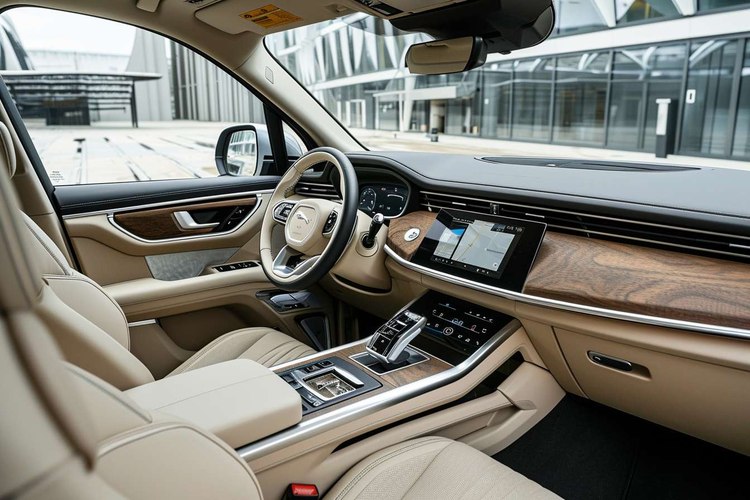Revolutionizing Automotive Interiors: The Rise of Haptic Feedback Systems
Imagine gripping the steering wheel of your car and feeling it gently pulse to guide you through a turn. As you reach for the infotainment screen, your fingertips sense a subtle vibration, confirming your selection without taking your eyes off the road. Welcome to the world of automotive haptic feedback systems, where touch-based technology is transforming the way we interact with our vehicles.

The Science Behind Haptic Feedback
Haptic feedback technology relies on the principle of mechanoreception, the body’s ability to sense touch and pressure. In automotive applications, this is typically achieved through the use of actuators – small devices that create vibrations or forces. These actuators can be electromagnetic, piezoelectric, or even utilize shape memory alloys to generate tactile sensations.
When a driver interacts with a haptic-enabled surface, the system sends a signal to the actuator, which then produces a specific tactile response. This response can range from a simple vibration to more complex sensations like texture simulation or directional feedback. The key to effective haptic feedback lies in its precision and ability to provide immediate, intuitive responses that enhance the user’s interaction with the vehicle.
Enhancing Driver Safety and Awareness
One of the primary benefits of haptic feedback in automotive interiors is its potential to improve driver safety. By providing tactile cues, haptic systems can alert drivers to potential hazards or important information without requiring them to take their eyes off the road. For instance, a steering wheel equipped with haptic feedback can vibrate to warn of lane departure or an impending collision, allowing for quicker reaction times.
Moreover, haptic feedback can be used to convey information about road conditions. Imagine feeling subtle vibrations through the steering wheel that mimic the texture of the road surface, providing valuable input about traction and grip. This enhanced sensory awareness can be particularly useful in adverse weather conditions or when driving on unfamiliar roads.
Streamlining In-Vehicle Controls
As automotive interiors become increasingly digital, with touchscreens replacing traditional buttons and knobs, haptic feedback offers a solution to the challenge of operating controls without visual confirmation. By providing tactile responses, haptic-enabled touchscreens allow drivers to navigate menus and adjust settings with greater confidence and reduced distraction.
Advanced haptic systems can even simulate the feel of physical buttons on a flat surface, creating virtual controls that can be easily located and operated by touch alone. This technology enables automakers to design sleeker, more minimalist interiors without sacrificing usability or ergonomics.
Personalization and User Experience
Haptic feedback systems open up new possibilities for personalization in automotive interiors. Drivers can customize the intensity and type of feedback they receive, tailoring the tactile experience to their preferences. This level of personalization extends beyond mere comfort – it can also be used to accommodate drivers with varying sensory sensitivities or physical abilities.
Furthermore, haptic feedback contributes to a more immersive and engaging driving experience. From simulating the feel of a high-performance engine’s vibrations to providing subtle cues that reinforce the vehicle’s brand identity, tactile sensations can create a deeper connection between driver and machine.
Challenges and Future Developments
While the potential of haptic feedback in automotive interiors is immense, there are still challenges to overcome. Ensuring consistency and reliability across different temperatures and environmental conditions is crucial. Additionally, integrating haptic systems with other vehicle technologies, such as advanced driver assistance systems (ADAS), requires careful consideration to avoid information overload or conflicting signals.
Looking ahead, the future of haptic feedback in automobiles is bright. Researchers are exploring more advanced haptic technologies, such as ultrasonic mid-air haptics, which could create tactile sensations without the need for physical contact. This could lead to gesture-controlled interfaces that provide feedback in three-dimensional space, further revolutionizing automotive interior design.
As vehicles become increasingly connected and autonomous, the role of haptic feedback is likely to evolve. In semi-autonomous driving scenarios, for example, haptic cues could be used to smoothly transition control between the vehicle and the driver, ensuring a seamless and safe handover process.
The integration of haptic feedback systems in automotive interiors marks a significant step forward in the evolution of human-vehicle interaction. By engaging our sense of touch, these technologies promise to enhance safety, improve usability, and create more intuitive and personalized driving experiences. As automakers continue to push the boundaries of interior design and functionality, haptic feedback will undoubtedly play a crucial role in shaping the future of how we interact with our vehicles.





